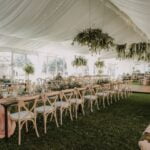Your wedding day is one of the most significant and memorable moments in your life, making it crucial to capture every special moment through photography. In this article, we will explore how to take wedding photography and the essential elements to consider when capturing these cherished moments. From equipment and preparation to composition and editing, we’ll provide an in-depth guide on how to create stunning and timeless wedding photos that will be treasured for years to come.
Wedding photography serves as a lasting memento of a couple’s love story, documenting the joy, emotions, and intimacy shared on their special day. As a photographer, it is essential to understand the significance of this art form in preserving memories for generations to come. With the right skillset and knowledge, you can create visual narratives that evoke powerful emotions and stand the test of time.
In the following sections, we will delve into the technical aspects of wedding photography, including essential equipment, preparation checklists, posing techniques, handling challenging lighting conditions, storytelling through images, as well as post-processing and delivering the final product to clients. Whether you are an aspiring wedding photographer or a seasoned professional looking to refine your craft, this comprehensive guide will equip you with the skills needed to capture unforgettable moments on a couple’s big day.
Essential Equipment for Wedding Photography
When it comes to capturing the special moments of a wedding day, having the right photography equipment is essential. Here are some of the must-have items for any wedding photographer:
- High-quality camera: Invest in a professional-grade DSLR or mirrorless camera that can handle a variety of lighting conditions and capture sharp, high-resolution images.
- Lenses: A versatile zoom lens, such as a 24-70mm, is ideal for capturing a range of shots throughout the day, while a fast prime lens, like a 50mm or 85mm, is great for portrait shots and low-light situations.
- External flash: Even if you prefer natural light photography, having an external flash can be useful for adding fill light and avoiding harsh shadows in certain locations.
- Tripod: Especially important for low-light settings and long exposure shots, a sturdy tripod will help ensure sharp images without camera shake.
- Batteries and memory cards: Always carry extra batteries and memory cards to avoid running out of power or storage space during the event.
In addition to these basic equipment essentials, consider adding other useful items to your wedding photography kit, such as a camera bag or backpack to keep everything organized and protected, a reflector for bouncing or diffusing light when needed, and lens cleaning supplies to keep your gear in top condition throughout the day.
When learning how to take wedding photography, it’s crucial to be well-prepared with the right equipment to confidently capture every precious moment.
Remember that each item on this list should be carefully selected based on your personal shooting style and the specific needs of each wedding event. Building up your collection gradually can lead to more efficient and enjoyable photography experiences over time.
Preparing for the Big Day
You’ve been hired to capture one of the most important days in a couple’s life – their wedding day. In order to be fully prepared and ensure you don’t miss any crucial shots, it’s essential to have a comprehensive checklist. Here are some items that should be on your wedding photography checklist:
- Communicate with the couple: Before the big day, have a detailed discussion with the couple about their expectations, shot list, and any specific requests they may have.
- Scout the location: Visit the venue ahead of time to familiarize yourself with the layout, lighting conditions, and potential photo opportunities.
- Check your equipment: Ensure all your gear is in working order and that you have backups for essential items such as camera bodies, lenses, memory cards, and batteries.
- Create a timeline: Work with the couple or wedding planner to establish a schedule for the day that includes key moments such as getting ready, ceremony, family portraits, reception, and other special events.
- Prepare for group photos: Compile a list of group shots requested by the couple so you can efficiently organize and capture them on the day. This will help ensure no important combinations are missed.
Following a carefully constructed wedding photography checklist can help you stay organized and focused during what can be a fast-paced and hectic event. By covering all your bases beforehand, you’ll be better equipped to capture every precious moment for your clients.
Remember that there may be additional items unique to each wedding that should also be included in your checklist. How to take wedding photography is not only about having great technical skills behind the camera but also being well-prepared throughout every stage of the process.
Capturing the Perfect Moments
When it comes to wedding photography, capturing the perfect moments is essential. This means being able to direct, pose, and compose the couple in a way that captures their love and emotions. To achieve this, it’s important to establish a connection with the couple before the big day. Get to know their story, what makes them laugh, and what makes them feel comfortable. Building rapport will help create a more relaxed atmosphere during the shoot.
In terms of posing, it’s important to guide the couple without making them feel too staged or unnatural. Encourage them to interact with each other as they normally would while gently nudging them into more flattering positions for the camera.
When it comes to composition, think about using different angles and perspectives to add variety and interest to the photos. Play with framing techniques such as leading lines or use natural elements in the environment to frame your subjects creatively.
Additionally, it’s crucial to be mindful of not only capturing posed shots but also candid moments that reflect genuine emotions. Be vigilant throughout the day and keep an eye out for those fleeting moments that truly capture the essence of the wedding day. Remember that every couple is unique, so adapt your posing and composition techniques based on their personalities and preferences.
| Tips for Posing | Tips for Composition |
|---|---|
| Establish rapport with the couple before the shoot | Use different angles and perspectives |
| Encourage natural interaction between the couple | Frame creatively using environmental elements |
| Capture candid moments alongside posed shots | Adapt techniques based on couple’s personalities |
Dealing With Challenging Lighting Conditions
One of the biggest challenges that wedding photographers face is dealing with varying lighting conditions. Whether it’s harsh sunlight, low light indoors, or mixed lighting during the ceremony and reception, you need to be prepared to adapt and make the most of any situation. Here are some essential tips for handling challenging lighting conditions on the big day.
First and foremost, it’s crucial to know your equipment inside and out. Understanding how to adjust your camera settings for different lighting situations is key. Make sure you are comfortable with adjusting ISO, aperture, and shutter speed on the fly. This will allow you to capture stunning photos even in difficult lighting conditions.
Another important aspect of dealing with challenging lighting is being prepared with the right gear. Investing in quality lenses that perform well in low light can make a world of difference. Additionally, having an external flash or reflector on hand can help you fill in shadows and balance out uneven lighting.
Lastly, don’t be afraid to get creative with your compositions and angles when facing challenging lighting conditions. Look for ways to use natural light to your advantage, such as shooting through windows or using backlighting for a dramatic effect. Embracing the unique atmosphere created by different lighting situations can result in truly memorable and visually striking wedding photos.
| Aspect | Tips |
|---|---|
| Know Your Gear | Adjust ISO, aperture, and shutter speed; invest in quality lenses. |
| Be Prepared | Have an external flash or reflector; bring additional lighting if needed. |
| Get Creative | Use natural light creatively; look for unique angles and compositions. |
The Art of Storytelling Through Wedding Photography
Capturing Emotions and Moments
One of the key elements of storytelling through wedding photography is capturing genuine emotions and touching moments. As a photographer, it is important to be observant and attentive to the interactions between the couple, their families, and guests.
These candid moments can often convey more emotion and authenticity than posed photographs. Whether it’s a tearful exchange of vows, a joyous first dance, or a heartfelt embrace between loved ones, these are the moments that truly capture the essence of the day.
Creating a Narrative
In order to create a narrative with wedding photos, it’s important to approach the event as a visual storyteller. This means paying attention to the flow of events and anticipating noteworthy moments before they happen. By taking a photojournalistic approach, photographers can capture the progression of the day in a way that allows viewers to experience and feel the emotions themselves.
Choosing the Right Backdrops
The choice of backdrops and settings also plays a significant role in telling a story through wedding photography. From the scenic beauty of the ceremony location to the intimate details of the reception venue, each setting contributes to the overall narrative. By strategically framing shots within these environments, photographers can enhance their storytelling by providing context and atmosphere for each moment captured.
Editing and Touching Up Wedding Photos
Once the wedding day is over and you have taken hundreds of beautiful photos, the next step is to edit and touch up those images to ensure that they are perfect for your clients. Editing wedding photos can take some time, but it is a crucial aspect of delivering high-quality and professional work. The key to successful editing is finding the right balance between enhancing the images while still maintaining a natural and authentic look.
One of the first steps in editing wedding photos is to cull through all the images and select the best ones for further processing. This involves removing any duplicate or low-quality shots, as well as identifying the images that best capture the special moments of the day. Once you have selected your top photos, you can begin the process of enhancing them through color correction, exposure adjustments, and retouching.
When it comes to touching up wedding photos, it is important to keep in mind that less is often more. While it can be tempting to heavily manipulate images, especially when dealing with imperfections or blemishes, it’s essential to remember that these photos are meant to document real-life moments.
Subtle enhancements such as softening skin tones, removing distractions from the background, or adjusting minor imperfections can help elevate the overall quality of the images without sacrificing their authenticity. By mastering the art of editing and touching up wedding photos, you can ensure that your clients receive stunning visuals that truly capture their special day.
As a photographer looking to excel in wedding photography, understanding how to take wedding photography also includes knowing how to effectively edit and touch up wedding photos. Taking exquisite shots during a couple’s big day is only one aspect; ensuring high-quality post-production work on those photographs is equally significant in delivering an exceptional final product for your clients.
Delivering the Final Product
After the wedding day has come and gone, it’s time to deliver the final product to your clients. This is a crucial part of your job as a wedding photographer, as your clients are eagerly anticipating seeing and sharing their special day through your lens. Here are some important aspects to consider when presenting and sharing wedding photos with clients.
Creating a Stunning Wedding Photo Album
One of the most popular ways to deliver wedding photos to clients is through a beautifully designed photo album. This allows couples to flip through physical pages and relive each moment from their special day. When creating a wedding photo album, it’s essential to select a variety of images that truly capture the essence of the day. Consider including details shots, candid moments, posed portraits, and group shots to provide a well-rounded representation of the event.
Online Galleries for Easy Sharing
In addition to a physical album, many couples appreciate having their wedding photos available in an online gallery for easy access and sharing with friends and family. There are several platforms available for creating online galleries, so be sure to choose one that best suits your client’s needs. Online galleries also make it convenient for clients to order prints or digital downloads of their favorite images.
Personalized USB Drive or Digital Download
Some couples prefer the convenience of having all their high-resolution images stored on a personalized USB drive or delivered as a digital download. This option allows them to easily make additional copies or backups of their precious memories without having to rely solely on physical prints or albums.
By offering various delivery methods such as photo albums, online galleries, and digital downloads, you can ensure that you are meeting the unique preferences of each couple while providing them with an exceptional end product that they will cherish for years to come.
Conclusion
In conclusion, wedding photography is a highly rewarding and fulfilling career that allows photographers to capture and preserve one of the most important days in a couple’s life. It requires not only technical skills but also creativity, patience, and an understanding of how to connect with clients on a personal level. The ability to tell a story through photographs and create timeless memories for couples is what makes wedding photography such a special profession.
As mentioned in the previous sections, essential equipment, thorough preparation, and the ability to adapt to challenging lighting conditions are all crucial aspects of being a successful wedding photographer. Additionally, knowing how to pose couples effectively and compose shots that evoke emotion are key elements in creating stunning wedding photos. Furthermore, the post-production process of editing and touching up images is essential for delivering high-quality final products to clients.
Ultimately, the career of wedding photography offers countless opportunities for growth and creativity. From building relationships with clients to capturing beautiful moments on one of the most important days of their lives, being a wedding photographer allows for a deeply fulfilling and personally rewarding professional journey. For those who have a passion for both photography and storytelling, pursuing wedding photography as a career can be incredibly gratifying.
Frequently Asked Questions
How Do You Take Good Wedding Photography?
Good wedding photography requires a combination of technical skill, artistic vision, and the ability to capture genuine moments. It’s important to understand lighting, composition, and camera settings in order to take high-quality images.
Additionally, building a rapport with the couple and understanding their preferences can help in capturing their special day in a way that reflects their unique love story.
How Do You Take Wedding Pictures for the First Time?
When taking wedding pictures for the first time, it’s crucial to do your research and prepare as much as possible. Familiarize yourself with the venue, create a shot list, and discuss expectations with the couple beforehand. Being organized and confident will help you navigate through the event smoothly while capturing all the important moments.
How Do You Capture Wedding Photography?
Capturing wedding photography involves being observant, patient, and ready to anticipate candid moments. It’s important to blend into the background as much as possible while still being proactive in seeking out opportunities for great shots.
Communication with the couple is also essential – understanding their vision and being able to direct them when necessary can result in beautiful and meaningful photographs.

I have been involved in marriages for over 20 years helping couples and singles understand more about them.





